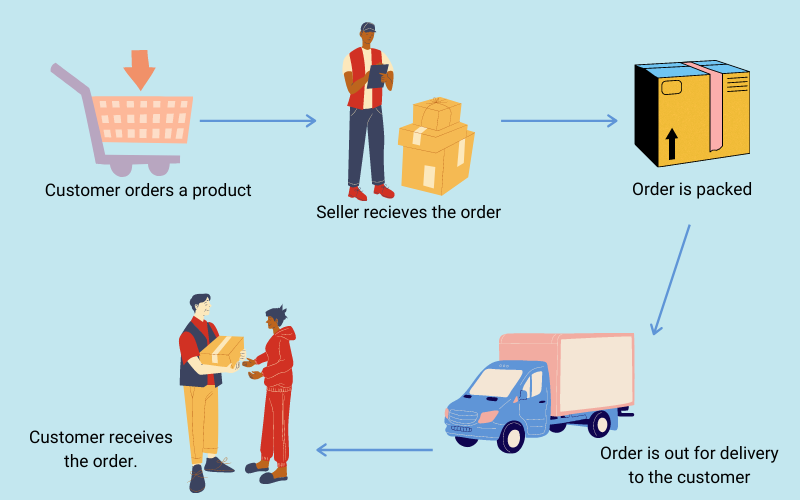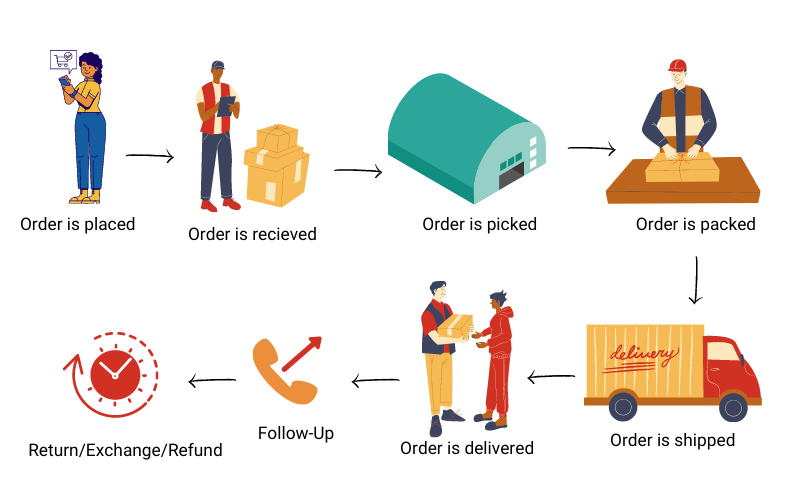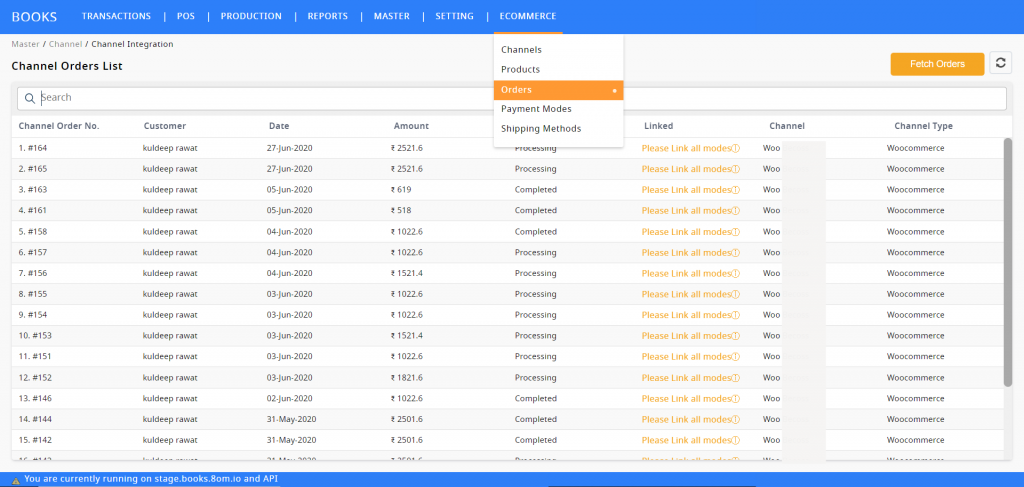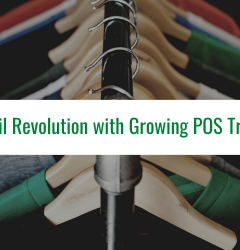22 Mar

Order Management assists with following order from beginning to satisfaction and dealing with individuals, processes and information associated with the order as it travels through its life cycle.
When a customer taps the “Purchase” button, their order’s excursion starts.
New orders are put on your eCommerce stage, at that point whoever is putting away your stock needs to choose, bundle, and ship the correct items to the ideal spot.
This probably won’t appear to be too hard when you have a shiny new business: A couple of orders come in every day and you can rapidly (and efficiently) satisfy them yourself. Forget about it.
Potential obstructions can emerge, notwithstanding, as sales develop, channels duplicate, products are added to your stock, and your customer base extends.
An order management system can help eliminate bottlenecks for you as your eCommerce store develops. Here’s the secret.
What is order management?
That second when a customer puts in an order on your eCommerce site is so energizing, but on the other hand it’s the start of an excursion for the bought items.
After purchase, you need to discover, bundle, and convey the thing. What’s more, as your retail business develops, it turns out to be progressively more perplexing to manage with your orders.

An order management system gives you an all in one resource to see and deal with all customer orders in a single spot.
A few systems offer two-way sync that makes it passes sure order data between your order management system and your eCommerce stage while giving you perceivability into the whole cycle. This can help robotize the progression of deals order data to each piece of the production network.
That implies you can follow the whole excursion of a customer order, from the “Purchase” catch to convey — and even return.
So, a order management system arranges and robotizes all that requires to end up getting customers what they ordered on schedule and in astounding condition.
What is an order management system?
An order management system gives you an all in one resource to see and deal with all customer orders in a single spot.
A few systems offer two-way sync that makes it passes sure order data between your order management system and your eCommerce stage while giving you perceivability into the whole cycle. This can help robotize the progression of deals order data to each piece of the production network.
That implies you can follow the whole excursion of a customer order, from the “Purchase” catch to convey — and even return.

So, a order management system arranges and robotizes all that requires to end up getting customers what they ordered on schedule and in astounding condition.
What is order processing?
Order processing is the interaction or work process from order position to conveyance. This is a key component of retail order satisfaction, where unwavering quality and exactness lead to consumer loyalty.
Steps all together handling incorporate picking, arranging, following and transportation. Order preparing can go from manual cycles (transcribed on a order log sheet) to exceptionally mechanical and information driven cycles (through online orders and automated order processing software) contingent upon the activity.
Why is an Order Management System Important for Your eCommerce Business?
Order management contacts for all intents and purposes each system and cycle in the inventory network. Most organizations at this point don’t contain order management inside their association. They include various accomplices like parts and segments providers, get together and bundling administrations or conveyance focuses, making it simple to lose perceivability and control of the order. This outcomes in exorbitant manual cycles to finish and convey the order without mistakes. An OMS can help control costs and produce income via robotizing manual cycles and decreasing blunders.

Remotely, order management straightforwardly affects how a customer sees a business or brand. In an omnichannel climate, customers anticipate a consistent encounter. A customer may arrange on the web yet have questions and complete the order through a call place. As the order is being satisfied, the customer hopes to see refreshes like messages en route.
In the event that there is an issue, they may wish to return it through an actual channel like a store. Each point in the excursion presents a chance to give an extraordinary customer experience and lift maintenance and income. The omnichannel venture additionally presents freedoms to make up-sell and strategically pitch suggestions and develop income.
Also, numerous reasons make a order management system fundamental for the smooth working of your business. How about we view some of them –
Smooth out Fulfilment Process
An order management system assists you with smoothing out your order satisfaction process by adjusting all exercises in a unidirectional stream. It sets up a uniform organization for order handling that kills all questions around re-checks. It permits you to ask orders for to take a hike and ship them quicker.
Lessen Errors
With robotized order management, you don’t need to monitor approaching orders in a dominate sheet physically. The OMS straightforwardly brings information from your site and stock to give you an all encompassing perspective on your present approaching, handled, and forthcoming orders.
Hastens Order Processing
A smoothed out measure assists you with taking out pointless advances like rundown support and looking at to send orders to the warehouse and afterward measure them. You can save 24-36 hours with a computerized interaction that cautions your stockroom when another order comes in. Else, you will send a blended rundown toward the day’s end, and the orders will start handling a day later.
Single View For Multiple Channels
In the event that you sell on multiple channels like Amazon, eBay, Shopify, Bigcommerce, and so forth you can without much of a stretch coordinate all channels into one and interaction orders as one unit. This assists you with keeping a solitary view across all channels, and it straightforwardly diminished the amount from an expert stock. This maintains a strategic distance from disarray, and you can eliminate rattling off of stock items quicker.
Consistent Inventory Sync
Consistent stock sync behind the scenes can eliminate the questions around making various orders, off base SKU subtleties, item confound, and so forth It likewise assists you with dealing with your stock in a more coordinated way. On the off chance that you use stock administration programming that additionally contains an OMS, your business can flourish better in this market.
Key features of effective order management
Perceivability
View the whole inventory network and separate occasions to anticipate issues and grow more effective cycles.
Knowledge
Tune order management cycles to an association’s business rules and execution objectives.
Adaptability
Break orders or occasions into remarkable work things that can be directed to the fitting systems or assets.
Ongoing stock
Get a solitary perspective on stock, see what’s available, on the way and current interest levels — lessening the need to assist shipments or keep up exorbitant wellbeing stock.
Conveyance and administration planning
Match conveyance responsibilities to stock, assets and abilities; permit administration solicitations to be tended to all the more effectively.
Customer commitment advancements
Give customer confronting faculty a perspective on the customer back-end stock and assets so they can execute exchanges all the more productively.
Satisfaction enhancement
Examine information and suggest choices that consider how and where customers need orders transported, time-to-conveyance and cost.
Why your business needs accurate order management?
Setting aside the effort to execute order management cycles and systems can seem like additional formality when you’re bootstrapping business measures with a little group.
Be that as it may, as you develop your business, you may fall behind attempting to satisfy each and every order on your own. Here are only a couple of the issues tackled by precise order management.
1. Keep from overstocking and under-stocking
A high inventory turnover ratio can be something to be thankful however long you’re not finished or under-loading.
Overload and you’re sinking cash you can’t bear on unused items gathering dust before they ideally sell one day.
Under-stock and you hazard making customers wait, splitting shipments, or losing simple deals completely from customers who were prepared to purchase presently yet will most likely wind up giving that cash to your rival all things being equal.
BooksPOS’s structure and inventory management programming permit vendors to see occasional patterns in stock levels so they realize whether to get ready for a decay or an expansion in deals.
Online clothing company FLEO Shorts, for example, will send new stock to BookPOS week after week:
“It’s truly simple to make new SKUs and restock existing ones utilizing BooksPOS’s innovation, which is particularly significant with high stock turnover,” affirms fellow benefactor Carl Protsch.
This guarantees that organizations like FLEO don’t run out of items, keeping the business productive and customers glad.
2. Fewer mistakes on fulfilling orders
It’s not difficult to dodge satisfaction botches when you’re just transportation a couple of orders a day.
You basically pick the correct item, bundle it well, print the shipping mark, and send it off.
Presently envision that your business takes off. Orders are coming in every minute of every day from everywhere the world through different channels. In the interim, customers are assaulting you with messages asking about their order status, grumbling about conveyance times, and ordering discounts.
It’s simply human to commit errors when you are managing this high volume of orders and level of intricacy. Wrong items, wrong locations, deferred shipments… these can harm the standing of a developing eCommerce business.
That is the reason it’s so imperative to have a smoothed out Order management system set up. More computerization and synchronicity mean less human mistake. Things may in any case turn out badly now and again — periodically, that is unavoidable — yet you’ll have the option to scale your business without getting overpowered.
3. Reliable information that helps you make data-driven decisions
It’s difficult to figure out information when it’s dispersed across numerous stages.
Order management system permit you to see all business order information in one spot, making it simpler to break down the accessible data and settle on information driven choices.
For instance, BooksPOS’s organization management system shows you how your customers’ orders are circulated topographically. You can utilize that data to part your stock across the satisfaction communities nearest to a large portion of your customers. Putting away your stock nearer to where your customers reside is an incredible way to reduce transporting costs and speed up.
Order management systems likewise make it simpler to recognize constant issues since you can see the whole interaction from a bird’s-eye see rather than as isolated pieces.
The capacity to settle on information driven choices can set aside you cash over the long haul. At the point when order volume is high, fixing even the littlest shortcoming can drive supply chain optimizations and fundamentally affect your main concern.
4. Less wasted time
In the event that you maintain an eCommerce business, odds are that you’re a maker, business visionary, or visionary. Here and there each of the three.
However, you know what probably doesn’t appear on that list? Ecommerce satisfaction master— and as it should be. Consistently spent investigating satisfaction issues is an hour that could be spent on developing your business through more essential exercises like item improvement or building your image.
Consider everything: Is overseeing stock, bundling items, dispatching orders, and dealing with discounts the best utilization of your time? It’s alright to do everything yourself when you’re simply beginning, however there comes a moment that it basically has neither rhyme nor reason any longer.
Noel Churchill, the proprietor and CEO of RainbowOPTX, invested the entirety of his energy satisfying orders:
The order management cycle
The order management cycle is a start to finish measure that starts when a customer buys an item and proceeds through conveyance and once in a while returns.
The cycle requires a few moving parts, frequently constrained by independent substances, to meet up to give a firm customer experience.

Here’s a quick look at each stage of the order management cycle.
1. Order placed
Orders are set by customers from better places, at various occasions, across each accessible channel.
To smooth out this cycle on the backend, you need multichannel order management or omnichannel satisfaction device that can naturally push the significant data (order subtleties, transporting subtleties, conveyance address, and so on) from your eCommerce store to your order management system.
2. Order received
When the order is set, the data is passed to the satisfaction place where the preparing of the order starts.
BooksPOS’s organization management programming figures out where to send it dependent on factors like accessible stock, customer conveyance address, and so on This assists keep with traveling times and conveyance costs low.
3. Order is picked
Picking for the most part alludes to following a picking list by recovering product(s) from the accessible stock and conveying it to a pressing station.
3PLs frequently have warehouse picking teams, or pickers, devoted to this errand.
This is where warehouse management plays a significant job: The manner in which stock is orchestrated effects the time it takes to satisfy each order.
4. Order is packaged
When the order is conveyed to the bundling region, it’s bundled in a way that minimizes the dimensional weight while as yet giving adequate security.
Some 3PLs permit customers to give their custom bundling to furnish customers with an extraordinary unpacking experience.
5. Order ships
When the thing is bundled, it’s dispatched to the customer. Some 3PLs collaborate with explicitly favored transporters, while others rate shop to guarantee that their customers get the best transportation costs. Transporters as a rule get the orders directly from the 3PL’s stockroom.
Each order is relegated a following number which is then shared (either physically or naturally, contingent upon the product) with the customer, permitting them to see the situation with their order consistently.
6. Item delivered
At long last, things are conveyed to the end customer. However, would they say they were the correct things? What’s more, would they say they were followed through on schedule?
In the event that order management has been on point this whole time, your chances are essentially higher.
7. How’d we do?
A decent order management cycle shouldn’t stop at conveyance. You ought to circle back to the customer inside a couple of days to guarantee that the order showed up, and to order input or a survey.
Circling back to customers post-conveyance isn’t only for empty talk.
Remaining in steady contact with steadfast customers can help you sort out why individuals continue to return to your online store and how you can build the lifetime estimation of every customer.
Then, spotting repeating issues can make a criticism circle that assists your business with improving.
8. Measure what could have been improved
Ought to you always accept returns and give discounts?
From one viewpoint, returns are an inescapable piece of eCommerce, and it’s imperative to deal with them well: Customers who are discontent with the return process are 3x bound to never purchase from that store until kingdom come.
Be that as it may, on the other, understanding the root issue of customer disappointment and tending to it can assist you with forestalling future returns and reduce coordinations costs.
Order management should offer a comprehensive method of dissecting the entire eCommerce coordinations measure. By following vital KPIs like lead times or return rates alongside subjective input, you can improve the interaction to build consumer loyalty and cut expenses simultaneously.
Order management software
Order management programming is certainly not a one-size-fits-all item. Every arrangement has its benefits and drawbacks. The best fit for your business will rely upon your particular requirements and objectives.
BooksPOS – Order Management Software Your Business Needs

BooksPOS is a cloud-based stock and order management arrangement that is appropriate for dealing with your orders across numerous channels. Additionally, it is outstanding amongst other programming to control your approaching orders and cycle them calm proficiently.
Here are a couple of BooksPOS’s contributions to ensure your business lines up with the item –
- Reconciliation with different deals channels like Amazon, Shopify, and so on
- Concentrated order management system
- Receipt age
- Installment coordination
- Order following
What to look for in an order management system?
While what you need in a order management system will contrast from one retailer to another, a few highlights are by and large helpful to most dealers.
In the first place, you need to pick a system that incorporates effectively with your eCommerce system. For instance, BooksPOS’s retail management system integrates with both WooCommerce and Shopify’s foundation. That way, the order management system knows precisely when a deal happens and what the order subtleties are.
BooksPOS is especially helpful as an order management system for retailers. BooksPOS permits retailers to follow every one of their deals and orders across their physical areas and eCommerce site in a solitary spot.
Past reconciliation with your online stage, your order management arrangement ought to likewise incorporate with some other fundamental systems like your bookkeeping programming.
Then, you’ll need the system to have total stock following capacities across your physical areas and warehouses. This is a critical element. Utilizing BooksPOS will track down that total stock following, specifically, has saved them from a “bad dream.”
“Utilizing Books POS has been an incredible choice. We can decrease our HR costs by $ 15,000,” says Dabin Wang, CEO, BECCOS GLOBAL, HONG KONG.
He proceeds, “Besides, we are averaging 200+ exchanges every day at the speed of 60-90 seconds for each exchange.”
At last, a decent order management system has thorough analytics so you can comprehend what’s going on in your cycle and work to enhance it.
Tips to improve your order management
Other than utilizing a order management system to run your order satisfaction measure, there are a couple of other accepted procedures you can utilize to improve your cycle.
Use Zone Skipping
In case you’re adequately large to have different warehouses, zone skipping helps decrease transporting expenses and accelerate travel times. Zone skipping alludes to the strategy for sending a thing to a customer from the distribution center closest in area to them, as opposed to picking the stockroom that has the most load of that thing. For example, if a customer in Iowa puts in a Order, you would satisfy it through your Des Moines stockroom as opposed to your Los Angeles distribution center.
Put a short delay period between purchase and fulfilment
It’s typical for vendors to need to promptly satisfy an eCommerce order the moment they see it. Nonetheless, deferring satisfaction for one to three hours is a shrewd method to reduce fraudulent purchases. Illuminate Labs, for example, set a programmed one-hour delay between getting a order and satisfying it. From that point forward, they haven’t sent a solitary false order.
Reduce the steps in your process
At every possible opportunity, eliminate pointless strides with machine computerization. Saving even a moment on an interaction can add up immediately when you’re satisfying many orders each day.
Learn more
Having the correct order management methodology and system set up can help prevent back ordered items and irate customers.
Order management programming smoothes out the order satisfaction measure by concentrating the entirety of your basic information and assisting you with settling on better business choices and increase order accuracy while minimizing expenses.
There are many order management system available, and the correct one for your business will rely upon your size, requirements, and objectives. BooksPOS engages shippers, all things considered, to oversee orders as well as re-appropriate the total order satisfaction measure, permitting you to zero in on developing your business.








